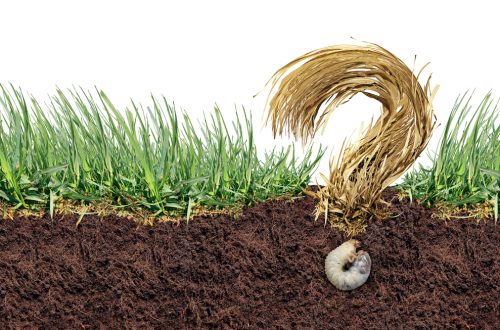

Maintaining a vibrant, green lawn in Tampa, Florida, is a point of pride for many homeowners. Yet, lurking beneath the surface, unseen threats like chinch bugs can undermine all your hard work. These tiny but destructive pests are known for wreaking havoc on even the most meticulously cared-for lawns. In this comprehensive guide, we'll explore the world of chinch bugs: understanding their behavior, recognizing signs of infestation, and most importantly, how to effectively manage them.
Chinch bugs (Blissus spp.) are minuscule insects belonging to the Blissidae family. Despite their small size, these pests wield a significant threat to lawns, especially in warm climates like Tampa, Florida. With their notorious appetite for grass, particularly warm-season varieties like St. Augustinegrass, chinch bugs can swiftly devastate even the healthiest of lawns. Equipped with piercing-sucking mouthparts, chinch bugs are adept at extracting sap from grass blades. This feeding behavior not only weakens the grass but also introduces toxins that contribute to extensive damage if left unaddressed.
As chinch bugs multiply, their impact on the lawn intensifies, often leading to widespread yellowing, browning, and wilting of grass, ultimately compromising the overall aesthetic and health of the lawn. Therefore, prompt identification and effective management of chinch bug infestations are essential for preserving the beauty and vitality of your lawn.
Early detection of chinch bug infestation is vital for preventing widespread damage to your lawn. Look out for these telltale signs:
Chinch bugs can wreak havoc on your lawn if left unchecked, causing unsightly damage and compromising its health. However, by implementing proactive measures, you can effectively prevent and control chinch bug infestations, ensuring your lawn remains lush and vibrant. Here are some key strategies:
A well-maintained lawn is more resilient to chinch bug infestations. Follow proper lawn care practices, including regular mowing, watering, and fertilizing. Mow at the appropriate height for your grass type to promote strong root growth and dense turf, making it less susceptible to pest damage. Additionally, avoid over-fertilizing, as excessive nitrogen can attract chinch bugs.
Chinch bugs thrive in dry conditions, so keeping soil moisture levels consistent can deter infestations. Aim to provide your lawn with approximately one inch of water per week, either through rainfall or irrigation. Use a rain gauge or soil moisture meter to monitor moisture levels and adjust your watering schedule accordingly.
Planting chinch bug-resistant grass varieties can help minimize the risk of infestation. Consider incorporating grasses like zoysiagrass or bahiagrass, which are less attractive to chinch bugs compared to other varieties. Before planting, research grass species that are well-suited to your local climate and soil conditions to ensure optimal growth and resilience.
When it comes to combating chinch bugs, Green Solutions offers targeted pest control services designed to protect your lawn:
Chinch bugs do not pose a direct threat to humans or pets. However, their presence can lead to extensive damage to your lawn if left untreated.
Green Solutions prioritizes prompt service and can typically respond to pest control inquiries and infestations right away. Our technicians work efficiently to address the issue and restore your lawn's health.
While it's challenging to completely eliminate the risk of chinch bug infestations, you can take proactive measures to minimize the likelihood. Maintaining healthy turf, monitoring soil moisture, and using resistant grass varieties can all help reduce the risk of infestation.
Chinch bugs may be small, but their impact on your lawn can be significant if left unchecked. By familiarizing yourself with the signs of infestation and implementing proactive management strategies, you can safeguard your lawn from damage and ensure its long-term health. With Green Solutions' targeted pest control services, you can enjoy a lush, vibrant lawn that enhances the beauty and value of your Tampa home, free from the threat of chinch bugs. Keep your lawn healthy with Green Solutions! Contact us today.
Read: Hot Headed Garden Pests: Fire Ants and How to Get Rid of Them
Already a Customer? Sign In Here